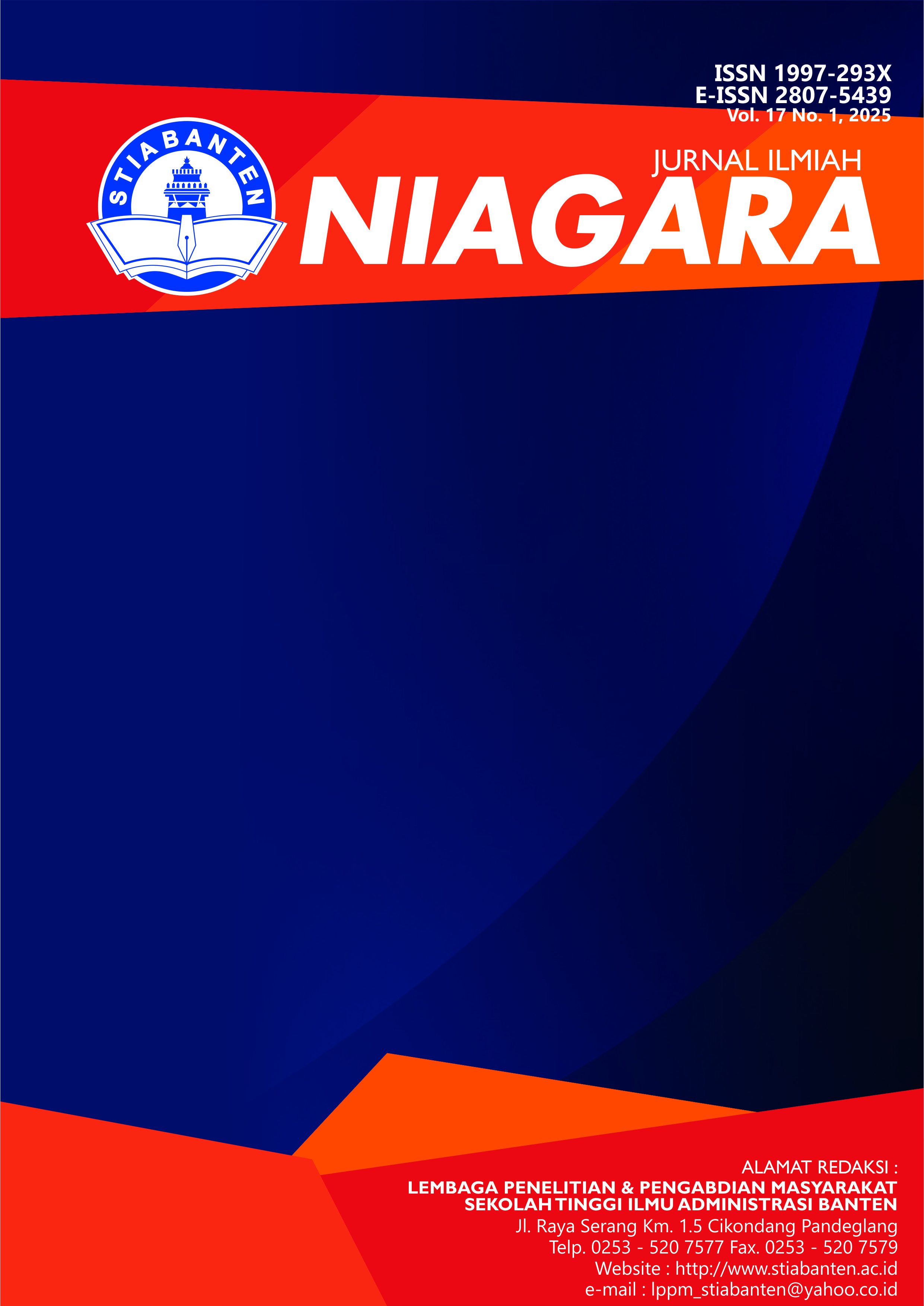Management of Badan Usaha Milik Desa Ranggawulung in Optimizing the Village Original Revenue of Curugbitung Village, Lebak Regency
DOI:
https://doi.org/10.55651/niagara.v17i1.266Keywords:
Pengelolaan, BUMDes, Pendapatan Asli DesaAbstract
This research aims to understand how the management of the Badan Usaha Milik Desa Ranggawulung in optimizes the Village Original Revenue in Curugbitung Village, Lebak Regency. The research was conducted in Curugbitung Village, Lebak Regency, over a period of three months.
The study employed a descriptive method with a qualitative approach. Data collection techniques included triangulation of techniques and sources. The data analysis technique used consisted of data collection, data reduction, data presentation, and drawing conclusions.
The conclusion of the study indicates that the implementation of the six principles of BUMDes management has not been carried out optimally. BUMDes Ranggawulung still has many areas that need further improvement. The lack of participation from BUMDes Ranggawulung members has resulted in some tasks not being carried out. There is also an absence of administrative documentation as accountability to information users. The promotion of tourism through social media is also suboptimal. Despite these shortcomings, BUMDes Ranggawulung remains committed to continuously improving and enhancing the implementation of the six principles of BUMDes management in order to be more professional and to raise the standard of BUMDes management.

Downloads
Published
How to Cite
Issue
Section
License
Copyright (c) 2025 NIAGARA Scientific Journal

This work is licensed under a Creative Commons Attribution 4.0 International License.


















